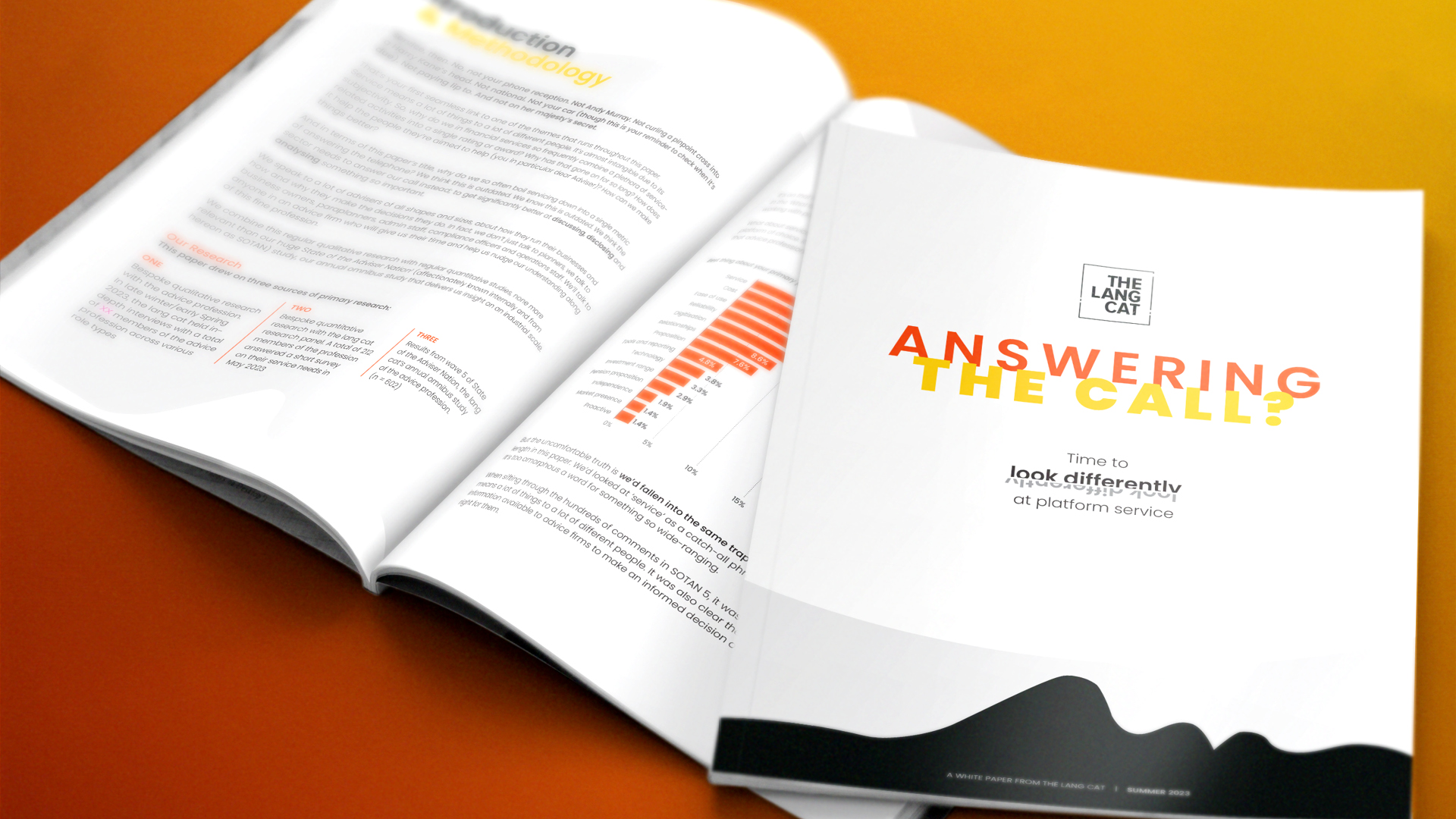Note:Hidden craftily throughout this blog are song titles by Tears for Fears. Anyone who gets them all wins a free copy of the lang cat Guide to Platform Pricing, along with regular updates for stuff like this. Enter via the comments form below.
Standard Life is the last platform to reveal its post-RDR charging structure. It has miraculously escaped the barracking that competitors like Skandia had for not disclosing theirs until the last minute, which is a neat trick. The cats in Lothian Road and round the country have done a very creditable job in keeping assets rolling in (at a healthy lick) while not giving the game away. So I guess we should move past the fact that SL is late to the party, and celebrate that it’s bothered to turn up at all.
Maybe it was busy sowing the seeds of love with its horny/pension saving study.
Ready to start? Now, the previous SL structure was a thing of twisted, labyrinthine, strange, unnatural beauty. No one person could understand it, and in fact the very act of observing it changed its nature. It was all to do with quantum harmonic oscillator stationary states and the effect of the Fourier transform of its constituent eigenstates. That, and large wrap discounts. Schrodinger’s cat would be proud.
So, what’s changed? In terms of the basics, not all that much. ISAs used to be at 40bps tiering down (slowly); they still are. SIPPs and bonds used to start at 60bps and tier down; that’s now 55bps. There used to be large adviser discounts which weren’t for more generously trousered intermediaries, but for those with either £10m or £20m of client assets on platform. Those discounts now change to ‘core’ adviser terms which are 10bps cheaper than standard. To qualify for ‘core’ terms you typically must have planked £20m or better on the platform. Everybody wants to rule the world, or at least be an adviser’s primary platform, and this is how SL tries to make that happen.
So apart from losing the semi-bundled shenanigans, what is really different? It’s true to say that the horrific system of multiple discounts has been simplified. For example the FAD (Fat Adviser Discount) only used to apply on SIPP assets up to £500k, unlike the FWD (Fat Wrap Discount) which went all the way up. And none of it worked with illustrations very well. The FAD now goes all the way up. We’ll need to wait and see if family discounts and whatnot carry through to this structure; SL isn’t putting it in place till February so details will emerge in time, no doubt.
SL was nice enough to call me up about all this, and the poor sod who drew the short straw stayed remarkably polite throughout our conversation. He would like me to point out that 2/3 of assets on SL Wrap will qualify for core terms, and that in many cases it’s ‘price on application’ as (along with many others) SL will do deals with those who can place very large amounts of client assets on the platform. I am happy to do so.
It is simpler. But it’s not all that simple. You’re still supposed to pay a (chunky if you’re on standard terms) premium over ISA/GIA for the privilege of having a SL Wrap SIPP. And that premium is in basis points, for no good reason that we can see. There are 6 tiers, which is at least 3 too many in our book. Alternatively, it’s one too few because now we can’t make Goombay Dance Band jokes. Goombay! Denied! Gutted.
Hang on, the phone’s ringing.
So what do we know? At the £100k mark (let’s assume an average client on SL has somewhere around £100k in SIPP and the same in ISA, though reality is a bit less kind) the ISA terms are a bit out of whack it’ll cost you £400pa to have your ISA on SL Wrap instead of £250 with Aviva or £320 on Elevate. So if lifeco-owned wraps are your thang, then you could do a bit better.
**EDIT- please see Mike Hogg’s comments below. If this was the case you’d get the £200k price for both the ISA and SIPP – so £370 instead of £400 in our example here. Family discounts are also hanging around.**
On SIPP, the standard terms remain very poor, but the core terms are (while still more than the market) a bit less offensive. Again, you could save a fair bit by going to Elevate or even Skandia if big companies are your bag. Interestingly, core terms get pretty good (outside of the fee-only / hybrid guys like ATS and AJ Bell) at the £1m mark or so ‘maybe that’s the SL strategy now. It’s a mad world.
What certainly is the strategy is looking to TCO (Total Cost of Ownership) instead of pure platform price, and SUPERCLEAN is a part of that. If you were happy to forget your normal investment proposition and limit your fund choice to SUPERCLEAN funds and if no-one else could get those terms and if you had £20m or better on the platform then you’d probably find SL to be quite competitive.
Absent any of those conditions being true, this is, and we have spent a long time discussing this here a bit meh. It’s not the level of charging that’s meh, though it certainly is meh, but that’s not the meh we’re talking about here. This is a price cut, we’re in the year of the knife after all and that’s welcome.
It’s the shape. It’s the fact that we have a 6-tier structure with double discounts and differential wrapper charging on an ad valorem basis. SL had the chance to really simplify things; to show that simplicity trumps lowest charge and to lift itself out of the price war debate by so doing. It’s chosen not to do that, and to price with and just above the market. I think that’s a chance missed and that’s a shame. I’m just left with a bit of a sense of disappointment – in my heart I think Standard Life is or has the potential to be bigger and better than this. But then what do I know, me and my big ideas?
Everybody loves a happy ending (and not the sort that provides a large oxytocin boost), and here’s mine: if you subscribe to the Guide you’ll get a monster full analysis of both SL’s and Cofunds’ changes next week. If that doesn’t send you head over heels I don’t know what will.




